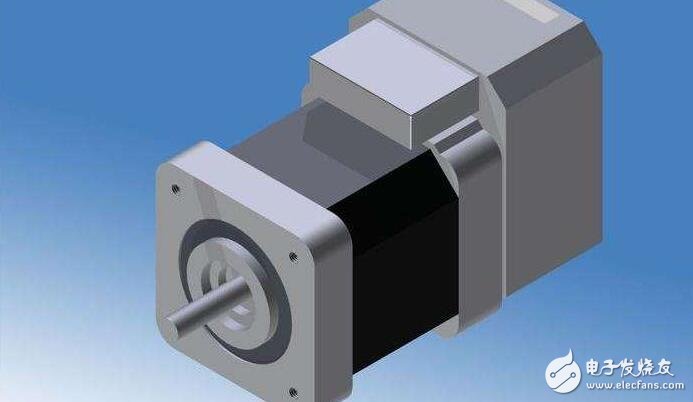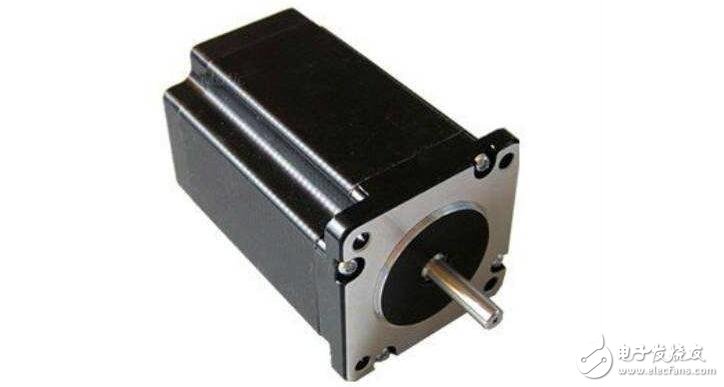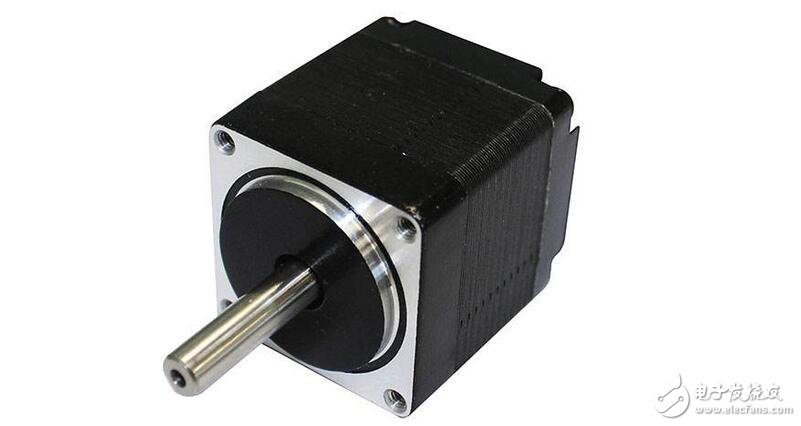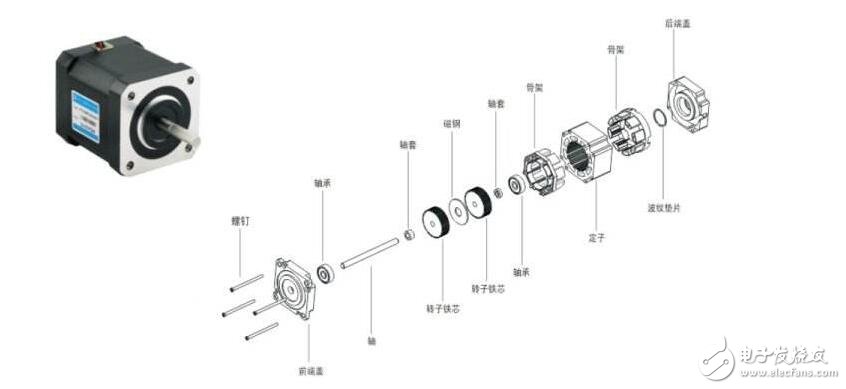The stepping motor is an induction motor. Its working principle is to use electronic circuit to supply power when the DC power is changed into components. The multi-phase timing control current is used to supply the stepping motor with this current, and the stepping motor can work normally. The driver is a time-sharing power supply for the stepper motor, multi-phase timing controller.
Stepper motor, also known as pulse motor, is based on the most basic electromagnet principle. It is an electromagnet that can rotate freely. Its action principle is to generate electromagnetic torque by changing the air gap permeability. Its original model originated from year to year. At the beginning of the year, attempts to control were applied to the electrode transport mechanism of the hydrogen arc lamp. This is considered to be the original stepper motor. At the beginning of the twentieth century, stepper motors were widely used in telephone automatic switches. Because Western capitalist powers compete for colonies, stepper motors are widely used in independent systems such as ships and airplanes that lack AC power. The invention of transistors in the late 1950s was gradually applied to stepper motors, making it easier to control digital. After the 1980s, the control method of the stepping motor was more flexible due to the appearance of a cheap microcomputer in a multi-functional posture.

1, work characteristics
(1) The stepping motor is controlled by the pulse current, and the angular displacement of the output is strictly proportional to the number of input pulses. The angular velocity is strictly proportional to the frequency, and the rotation direction of the motor can be changed by changing the power-on sequence;
(2) If the current of the energized winding is maintained, the motor will stop at a certain position, that is, the stepping motor has self-locking capability and does not require mechanical braking;
(3) There is a certain step accuracy, no cumulative error;
(4) The disadvantage is that the efficiency is low.
2, the use of features
(1) Step error
The step error directly affects the positioning accuracy of the actuator. When the stepping motor is energized in one phase, the step error is determined by the accuracy of the stator and rotor, and the accuracy of the stator misalignment angle of each phase. When multi-phase is energized, the step angle is not only related to the above-mentioned processing assembly accuracy, but also related to the magnitude of the phase current and the magnetic circuit performance. The step error of domestic stepping motor is generally ±10′~±15′, and the step error of power stepping motor is generally ±20′~±25′.
(2) Maximum starting frequency and highest operating frequency
At no-load, the stepper motor starts suddenly from standstill and does not run out of steady speed. The highest value of the allowed start frequency is called the highest start frequency. When the starting frequency is greater than this value, the stepper motor will not operate normally. The maximum starting frequency fg is related to the inertia load J of the stepping motor. When J is increased, fg will decrease. The fg of the domestic stepping motor can exceed 5000 Hz at most, and the fg of the power stepping motor is generally 1000-3000 Hz. The highest frequency that the stepper motor can accept when it is continuously operated is called the highest operating frequency. It determines the maximum moving speed of the executing component together with the step angle. It is also determined by the load inertia J like the fg, and also the number of phases of the stator, the mode of energization, The power amplification stage of the control circuit is related to factors.
(3) Torque-frequency characteristics of the output
The stator winding of a stepper motor is itself an inductive load. The higher the input frequency, the smaller the excitation current. In addition, the higher the frequency, the more the variation in the magnetic flux is increased, so that the eddy current loss of the iron core is increased. Therefore, after the input frequency is increased, the output torque Md is lowered. The output torque of the highest working frequency of the power stepping motor can only reach 40% to 50% of the low frequency torque. The specification of the stepping motor should be selected according to the load requirement with reference to the high frequency output torque.

When selecting a stepper motor, you can choose according to the following steps, which can avoid the trouble caused by improper selection. The details are as follows, for reference only.
1, the choice of stepper motor torque
The holding torque of the stepper motor is similar to what the conventional motor calls "power." Of course, there are essential differences. The physical structure of the stepper motor is completely different from AC and DC motors, and the output power of the motor is variable. Which type of motor is usually selected based on the required torque level (ie the amount of torque required to carry the animal). Generally speaking, the torque is below 0.8Nm, and 20, 28, 35, 39, 42 (the diameter or square of the motor body, unit: mm) is selected; the torque is about 1N.m, and the 57 motor is more suitable. Torque force in several Nm or larger cases, it is necessary to select 86, 110, 130 and other specifications of the stepper motor.
2, step by step motor speed selection
Special consideration should also be given to the speed of the motor. Because the output torque of the motor is inversely proportional to the speed. That is to say, the stepping motor has a low speed (a few hundred revolutions per minute or less, and its output torque is large), and the torque in the high-speed rotation state (1000 rpm - 9000 rpm) is small. Of course, in some working conditions, high-speed motors are required. It is necessary to measure the coil resistance and inductance of the stepping motor. A motor with a slightly smaller inductance can be selected as a high-speed motor to obtain a larger output torque. On the contrary, in the case of low speed and large torque, it is necessary to select the inductance at ten or tens of mH, and the resistance should be larger.
3. Selection of no-load starting frequency of stepping motor
Stepper motor no-load starting frequency, usually called "empty frequency". This is an important indicator for purchasing a motor. If it is required to start and stop frequently in an instant, and the rotation speed is around 1000 rpm (or higher), "accelerated start" is usually required. If you need to start directly to achieve high speed operation, it is best to choose a reactive or permanent magnet motor. The "empty frequency" of these motors is relatively high.
4, the number of phase selection of stepper motor
The choice of the number of phases of the stepper motor, this content, many customers have little attention, most of them are purchased casually. In fact, different phases of the motor, the work effect is different. The more the number of phases, the smaller the step angle can be, and the vibration at work is relatively small. In most cases, there are more two-phase motors. In the high-speed and high-torque working environment, it is more practical to select a three-phase stepping motor.
5, for the stepper motor use environment to choose
Special stepper motors are waterproof and oil resistant for use in special applications. For example, underwater robots require a water discharge motor. For special-purpose motors, it is necessary to select them.
6. Can you need special specifications according to your actual situation?
For special specifications of stepper motors, please communicate with us and order them within the scope permitted by the technology. For example, the diameter, length, and extension direction of the shaft.
7. If necessary, it is best to communicate and confirm the model with the technical engineer of the manufacturer.
If necessary, it is best to further communicate with the technical engineers of the manufacturer to confirm whether the stepper machine you want to select can meet all the requirements of your requirements.

Stepper motor selection
Stepper motors are composed of three major elements: step angle (involving phase number), static torque, and current. Once the three major factors are determined, the model of the stepper motor is determined.
1, the choice of step angle
The step angle of the motor depends on the accuracy of the load. The minimum resolution (equivalent) of the load is converted to the motor shaft, and the angle of each equivalent motor should be taken (including deceleration). The step angle of the motor should be equal to or less than this angle. At present, the step angle of stepping motors on the market generally has 0.36 degrees/0.72 degrees (five-phase motors), 0.9 degrees/1.8 degrees (two-phase and four-phase motors), and 1.5 degrees/three degrees (three-phase motors).
2, the choice of static torque
The dynamic torque of the stepper motor is difficult to determine at once. We often determine the static torque of the motor first. The static torque selection is based on the load on which the motor operates, and the load can be divided into two types: inertial load and friction load. A single inertia load and a single friction load are not present. When starting directly (generally by low speed), both loads should be considered. When starting acceleration, the inertia load is mainly considered. When the constant speed is running, only the friction load is considered. Under normal circumstances, the static torque should be 2-3 times of the friction load. Once the static torque is selected, the base and length of the motor can be determined (geometric size).
3, the choice of current
Motors with the same static torque have different operating characteristics due to different current parameters. The current of the motor can be judged according to the torque frequency characteristic curve (reference drive power and drive voltage).
4, torque and power conversion
Stepper motors are generally used in a wide range of speeds, and their power is variable. Generally, they are only measured by torque. The torque and power are converted as follows:
P= Ω·M Ω=2π·n/60 P=2πnM/60
Its P is the unit of power, Ω is the angular velocity per second, the unit is arc, n is the speed per minute, and M is the unit of torque in Newton·meter.
P=2Ï€fM/400 (half step work)
Where f is the number of pulses per second (referred to as PPS)

Points of attention in the application
1. Stepper motor is used in low-speed occasions---the speed per minute does not exceed 1000 rpm, (6666PPS at 0.9 degrees), preferably between 1000-3000PPS (0.9 degrees), which can be used to work here through the reduction gear. At this time, the motor has high working efficiency and low noise.
2. It is better not to use the whole step state of the stepping motor, and the vibration is large in the whole step state.
3. For historical reasons, only the motor with the nominal 12V voltage uses 12V. The voltage value of other motors is not the driving voltage volt value. The driving voltage can be selected according to the driver (recommended: 57BYG uses DC 24V-36V, 86BYG uses DC 50V, 110BYG uses 80V higher than DC. Of course, 12V voltage can be used in addition to 12V constant voltage drive. Other drive power can be used, but temperature rise should be considered.
4. The load with large moment of inertia should choose the motor with large frame size.
5. When the motor is at a high speed or a large inertia load, it is generally not started at the working speed, but the speed is increased by gradually increasing the frequency, and the motor does not lose the step. Secondly, the noise can be reduced and the positioning accuracy of the stop can be improved.
6. When high precision is used, it should be solved by mechanical deceleration, increasing the speed of the motor, or by using a driver with high subdivision number. It is also possible to use a 5-phase motor, but the whole system is more expensive, fewer manufacturers, and it is eliminated. The argument is a layman.
Tempered Glass Screen Protector
The JJT Tempered Glass Screen Protective Film is protected by specially treated glass, and the Tempered Glass Screen Protector brings excellent scratch resistance to the screen. The Tempered Glass Protective Film is made of shockproof technology, which has the characteristics of anti-scratch, anti-fingerprint and anti-oil, which can greatly reduce the damage to the screen due to strong collision. The adhesive force of the silicon adhesive ensures that there is nothing between the screen protector and the screen, thereby improving touch sensitivity. Ultra-transparent glass can ensure a better clear image quality than ordinary Screen Protectors.
The surface hardness of the Tempered Glass Screen Protection Film is 9H, which is 4 times that of ordinary PET Film. Sharp objects (such as knives and keys) will not scratch the surface.
The Screen Protector has an "oleophobic and waterproof" coating to prevent fingerprints and other contaminants, making the screen protector easy to clean.
It has unparalleled touch and high responsiveness to touch, 99.9% transparency, transparent without bubbles.
Tempered Screen Protector, Tempered Glass Screen Protector, Tempered Glass Protective Film, Tempered Glass Film, Tempered Glass Screen Protective Film
Shenzhen Jianjiantong Technology Co., Ltd. , https://www.tpuprotector.com